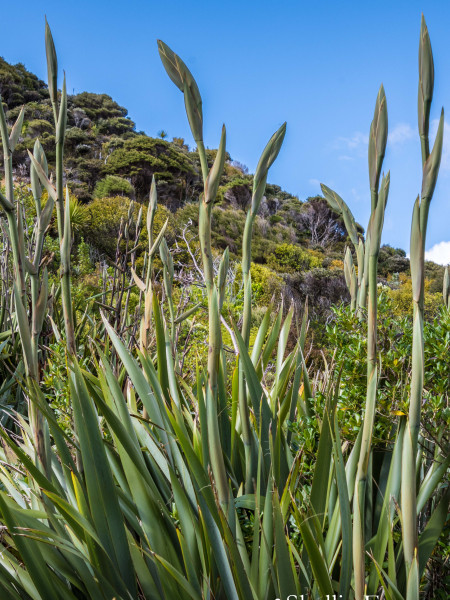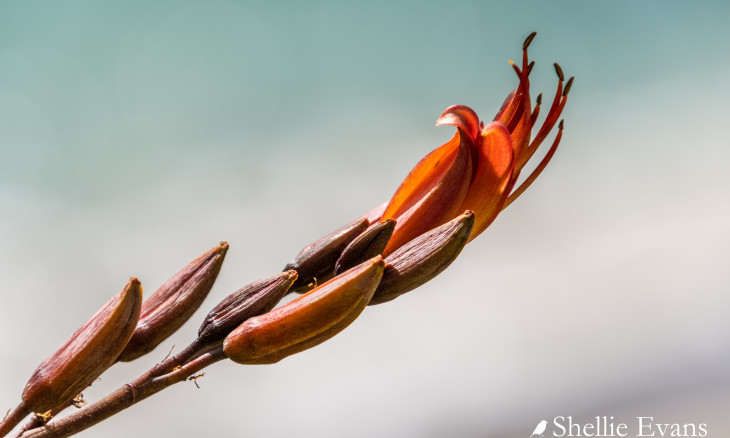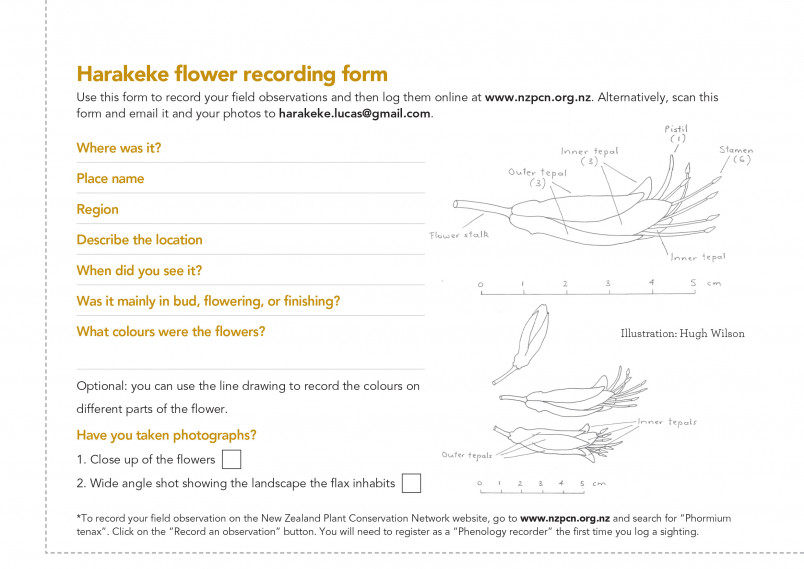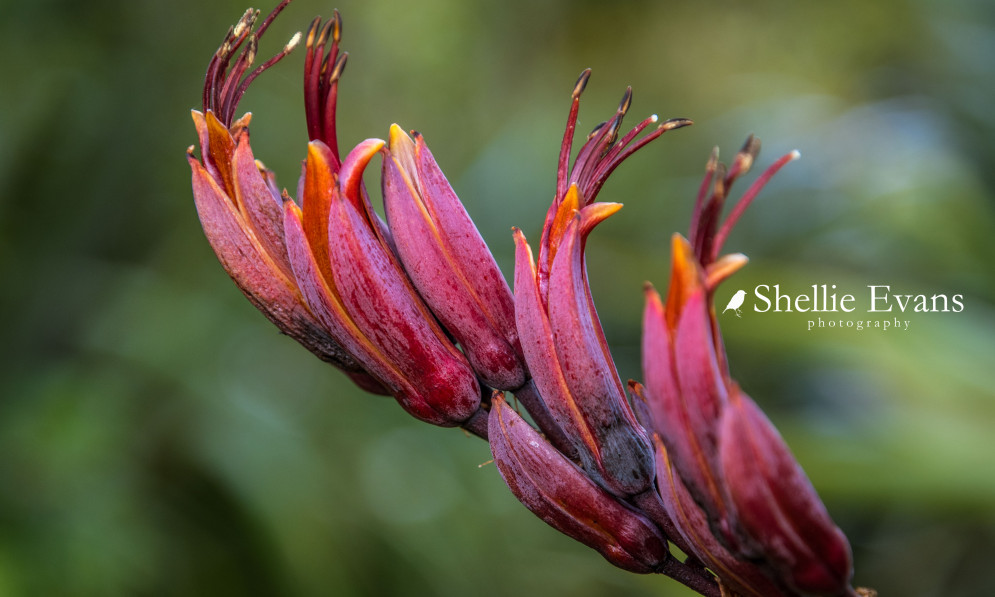Do harakeke display a different flower colour depending on the landscape they inhabit? Di Lucas, a landscape planner and ecologist, needs your help to find out the answer
Download your harakeke flower recording form to help create a flax colour map of New Zealand.
From Hokianga to Rakiura, the fat buds of harakeke are pointing determinedly skywards, as they have seasonally for millennia, ready to burst into flower – the kōrari. Harakeke or New Zealand flax grows naturally on each island, in every region, every district, and every rohe throughout the lands of Aotearoa New Zealand. This sturdy plant belongs on the islands too, including the Chatham Islands and Norfolk Island.
From the bucketing rainfall places of the north and west to rain-shadowed central and eastern places, harakeke belongs in various habitats. Our otherwise diverse lands are woven together by this staunch plant, the New Zealand flax, Phormium tenax.

Liking some wetness, harakeke frequently defines rivers and streams, lakes and wetlands, seepages and springs. From the dune swamps of our coasts, along the rivers feeding in, many metres above on the hills up-country, and down to our inland valley and basin floors, harakeke belongs extensively, or in niches, in every catchment.
Three decades ago, a kaumātua recounted to me a very old whakataukī (proverb), which recognised that harakeke display a different flower colour on each mountain range. Having since seen something of the diversity of colours in kōrari – various tones of yellow, orange, red, purple, green, and black – I have longed to explore the whakataukī and am hoping this year is a major flowering year around the country.
This summer, I’m launching a citizen science project to map the floral colours of harakeke from Northland to Southland. By working together, we can find out whether there is something to the whakataukī and, if there is, what causes the differences. We know the soil doesn’t impact flower colour, but perhaps something else in the plant’s ancestral landscape does, such as the kind of birds or insects living in its particular environment.
We seek your help in recording the flower colours of naturally wild harakeke throughout New Zealand. We’re hoping as many people as possible will record a naturally occurring plant’s location and context, and upload photos to the New Zealand Plant Conservation Network site.
Perhaps some Forest & Bird branches and Kiwi Conservation Clubs might like to collate some

further information for their area. They may also like to note any animals feeding on the harakeke flowers, whether tūī, bellbird, lizard, or myriad insects. They might even work with local iwi to explore the topic together.
Then, as the season progresses, we’ll make a harakeke/flax flower colour map of the country for Forest & Bird.
New Zealand paint manufacturers Resene are supporting the project by publicising it in its email newsletter. Resene also plans to create a custom colour palette of the harakeke colours, which will feature in Habitat magazine.
“This is such a wonderful idea!” says Rebecca Long, a Resene colour expert. “I’m looking forward to assisting Di with this very special project. I can’t wait to see the results!”
This project is about the natural diversity, not the cultural diversity of the species. Please confine your recordings to harakeke (P.tenax) understood to be naturally occurring, and not the result of plantings. If you need any more details or help uploading your field recordings, please contact me at harakeke.lucas@gmail.com.
Harakeke flower recording form

You can download a harakeke flower recording form to help record your observations.

